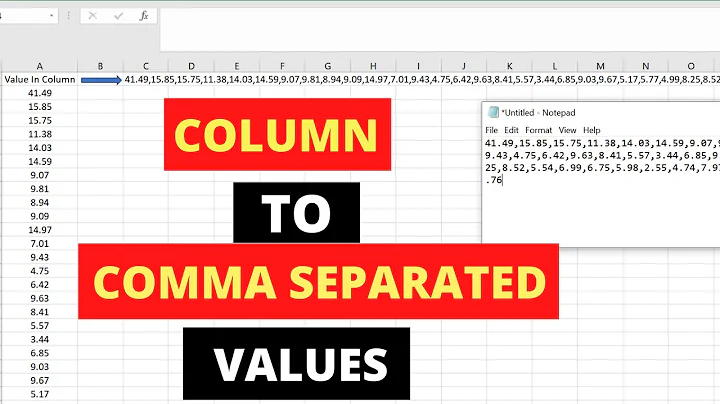Extracting column from comma separated text
Solution 1
awk -F , -v OFS='\t' 'NR == 1 || $6 > 4 {print $1, $6, $7, $8}' input.txt
Solution 2
I agree that awk is the best solution. You can do this just in bash with a couple of other tools:
cut -d , -f 2,6,7,8 filename | {
read header
tr , $'\t' <<< "$header"
while IFS=, read -r id num4 num5 num6; do
# bash can only do integer arithmetic
if [[ $(bc <<< "$num4 >= 4.0") = 1 ]]; then
printf "%s\t%s\t%s\t%s\n" "$id" "$num4" "$num5" "$num6"
fi
done
}
Solution 3
Really can't beat the awk script above, but here's a ruby solution,
#!/usr/bin/ruby1.9.1
puts "id\tnumber4\tnumber5\tnumber6"
ARGF.each_line do |line|
arr = line.split(',')
puts "#{arr[1]}\t#{arr[5]}\t#{arr[6]}\t#{arr[7]}" if arr[5].to_f > 4.0
end
To use the script call it with the filename or pipe the file into it.
Solution 4
Perl solution:
perl -F, -le '$, = "\t"; print @F[1,5,6,7] if $F[5] > 4 || $. == 1' file
-F,specifies the pattern to split on.-Fimplicitly sets-a
-aturns on autosplit mode when used with a-n. An implicit split command to the@Farray is done as the first thing inside the implicit while loop produced by the-n.-aimplicitly sets-n
-ncauses Perl to assume the loop around your program, which makes it iterate over filename arguments somewhat likesed -norawk
-lenables automatic line-ending processing. It has two separate effects. First, it automatically chomps the input record separator (\n). Second, it assigns the output record separator to\n.
-eused to enter one line of program
So, perl -F, -le '$, = "\t"; print @F[1,5,6,7] if $F[5] > 4 || $. == 1' do something like this:
use English;
$OUTPUT_RECORD_SEPARATOR = $INPUT_RECORD_SEPARATOR;
while (<>) { # iterate over each line of the each file
chomp;
@F = split(',');
$OUTPUT_FIELD_SEPARATOR = "\t";
print @F[1,5,6,7] if $F[5] > 4 || $INPUT_LINE_NUMBER == 1;
}
Related videos on Youtube
Baraskar Sandeep
Updated on September 18, 2022Comments
-
 Baraskar Sandeep over 1 year
Baraskar Sandeep over 1 yearI have a long comma-separated delimited file with 20K lines. Here's a sample:
"","id","number1","number2","number3","number4","number5","number6","number7" "1","MRTAT_1of3.RTS",17.1464602742708,17.1796255746079,17.1132949739337,0.996138996138996,-0.0055810322632996,1,1 "2","MRTAT_2of3.RTS",3.88270908946253,6.13558056235995,1.62983761656512,0.265637065637066,-1.91247162787182,0.718084341158075,1 "3","MRTAT_3of3.RTS",3.87323328936623,1.22711611247199,6.51935046626046,5.31274131274131,2.40945646701554,0.676814519398334,1I want to print like the columns with id, number4, number5 and number 6 with tab-delimited setting the condition number4 is greater than 4.0. Here's some sample output:
id number4 number5 number6 MRTAT_3of3.RTS 5.31274131274131 2.40945646701554 0.676814519398334 -
 Evgeny Vereshchagin almost 9 yearsshould be
Evgeny Vereshchagin almost 9 yearsshould be{print $2, $6, $7, $8} -
 roaima almost 9 yearsTo add value to your answer please could you take a few moments to explain how it works.
roaima almost 9 yearsTo add value to your answer please could you take a few moments to explain how it works. -
 Evgeny Vereshchagin almost 9 years@roaima, ok. one moment.
Evgeny Vereshchagin almost 9 years@roaima, ok. one moment. -
 Evgeny Vereshchagin almost 9 years@roaima, done. what do you think?
Evgeny Vereshchagin almost 9 years@roaima, done. what do you think?




